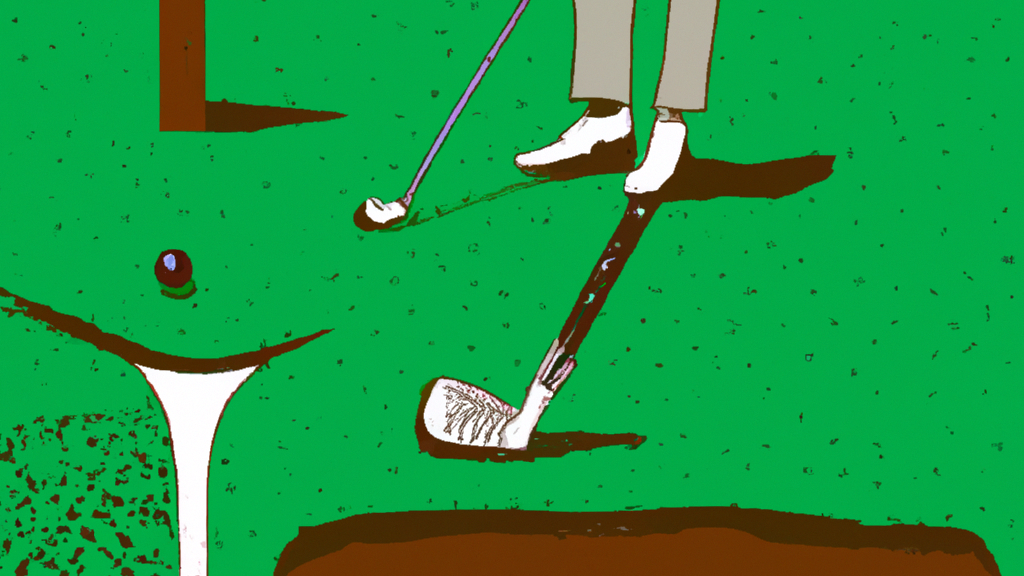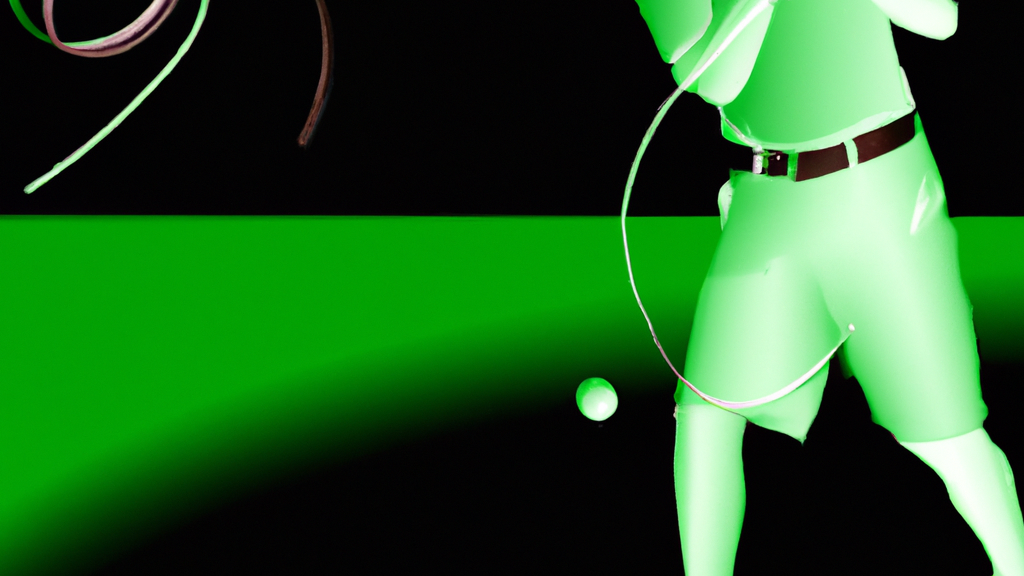HOW TO MANAGE GRASS CLIPPINGS ON YOUR GOLF COURSE
Golf courses are a sight to behold, with their lush green fairways and perfectly manicured greens. However, maintaining such a pristine appearance requires a lot of work, including the management of grass clippings. Grass clippings are an inevitable byproduct of mowing, and if not managed properly, they can cause a host of problems on the course. From clogging up irrigation systems to creating unsightly clumps on the fairways, grass clippings can be a headache for golf course managers.
In this blog post, we’ll explore some effective ways to manage grass clippings on your golf course, ensuring that your course remains in top condition. Whether you’re a golf course manager, a groundskeeper, or a golfer who cares about the condition of your course, this post is for you. So, let’s dive in and discover how to keep your golf course looking its best!

Maintaining a Golf Course: Managing Grass Clippings
Maintaining a golf course is no easy feat. It requires a lot of effort, time, and resources to keep the greens looking pristine. One of the most important aspects of golf course maintenance is managing grass clippings. Grass clippings can accumulate quickly and cause a range of problems if not managed properly. In this article, we will discuss how to manage grass clippings on your golf course.
Why is Managing Grass Clippings Important?
Grass clippings are a natural byproduct of mowing the greens, fairways, and roughs. While it may seem like a small issue, grass clippings can cause a range of problems if not managed properly. Here are some reasons why managing grass clippings is important:
- Aesthetics: Grass clippings can make the course look untidy and unkempt. This can negatively impact the overall experience of golfers and visitors.
- Safety: Grass clippings can create a slippery surface, which can be hazardous for golfers and maintenance staff.
- Health: Grass clippings can create a breeding ground for pests and diseases, which can damage the turf and affect the health of the grass.
- Environmental Impact: Grass clippings can contribute to nutrient runoff, which can harm nearby water bodies.
Effective Ways to Manage Grass Clippings
Now that we understand the importance of managing grass clippings, let’s discuss some effective ways to do so.
1. Mulching
Mulching is a popular method of managing grass clippings. It involves leaving the grass clippings on the turf after mowing. The clippings are then chopped into small pieces and left to decompose. Mulching has several benefits:
- It returns nutrients to the soil, which can improve the health of the turf.
- It reduces the need for fertilizers, which can save money and reduce environmental impact.
- It reduces the amount of waste generated by the golf course.
However, mulching may not be suitable for all areas of the golf course. For example, it may not be appropriate for greens, where the accumulation of grass clippings can affect ball roll and putting speed. In such cases, other methods of managing grass clippings may be more appropriate.
2. Bagging
Bagging involves collecting the grass clippings after mowing and disposing of them off-site. This method is suitable for areas where mulching is not appropriate, such as greens and tees. Bagging has several benefits:
- It keeps the course looking tidy and well-maintained.
- It reduces the risk of slip and fall accidents.
- It prevents the accumulation of grass clippings, which can attract pests and diseases.
However, bagging can be time-consuming and labor-intensive. It also generates a lot of waste, which can be costly to dispose of.
3. Composting
Composting is a sustainable method of managing grass clippings. It involves collecting the grass clippings and composting them on-site. Composting has several benefits:
- It reduces the amount of waste generated by the golf course.
- It produces a nutrient-rich soil amendment, which can be used to improve the health of the turf.
- It reduces the need for fertilizers, which can save money and reduce environmental impact.
However, composting requires a dedicated area for composting and regular maintenance. It also requires a certain level of expertise to ensure that the composting process is done correctly.
4. Sweeping
Sweeping involves using a sweeper attachment on a mower to collect grass clippings. This method is suitable for areas where bagging is not practical, such as roughs and fairways. Sweeping has several benefits:
- It keeps the course looking tidy and well-maintained.
- It reduces the risk of slip and fall accidents.
- It prevents the accumulation of grass clippings, which can attract pests and diseases.
However, sweeping can be time-consuming and labor-intensive. It also requires a specialized attachment, which can be costly.
5. Side Discharge
Side discharge involves mowing the grass and discharging the clippings to the side of the mower. This method is suitable for areas where mulching is not practical, such as roughs and fairways. Side discharge has several benefits:
- It reduces the amount of waste generated by the golf course.
- It returns nutrients to the soil, which can improve the health of the turf.
- It reduces the need for fertilizers, which can save money and reduce environmental impact.
However, side discharge can create a messy appearance and may not be suitable for areas where aesthetics are important.
Conclusion
Managing grass clippings is an important aspect of golf course maintenance. There are several methods of managing grass clippings, including mulching, bagging, composting, sweeping, and side discharge. Each method has its own benefits and drawbacks, and the choice of method will depend on the specific needs of the golf course. By effectively managing grass clippings, golf course managers can ensure that the course looks tidy, is safe for golfers and maintenance staff, and is healthy and sustainable.

- Golf Tempe Public/Private Partnership | City of Tempe, AZ
Grass Clippings, Inc. was authorized to begin negotiations for Rolling Hills while CourseCo … 10 – Proposed Rolling Hills Golf Course management change, … - Mowing And Rolling Greens To Manage Green Speed And Turf …
Aug 2, 2019 … In the early days of golf, the height of the grass on putting greens was controlled naturally by the intense grazing of rabbits and sheep. - Grass Clippings at Rolling Hills | Modernizing golf
In addition, Grass Clippings will renovate the existing clubhouse and proshop while adding space for a community gathering place, family activity lawn, and … - Golf Course Fact Sheets — Department of Plant Science
Control of Summer Annual Grass Weeds in Turfgrasses … The best way to deal with clippings produced by mowing is to recycle them back to your lawn. - Tempe moves forward with plans for major makeover of Rolling Hills …
Jul 7, 2022 … A major renovation is coming to Tempe Rolling Hills Golf Course that … Grass Clippings would lease the property and manage operations. - Mowing To Recycle Grass Clippings: Let the Clips Fall Where They …
Jul 8, 2021 … As an alternative to the banning of yardwaste in landfills, some progressive municipalities have adopted technology to deal with clippings … - ENH19/LH007: Bermudagrass for Florida Lawns
… manage bermudagrass in Florida landscape. Hybrid bermudagrass used on a golf course. … and may be best managed by professional lawn care companies. - RCE Publications
Best Management Practices for Irrigating Golf Course Turf · Best Management Practices for Nutrient … Nutrient Management of Land Applied Grass Clippings … - How Golf Courses Deal With Wastewater
Aug 20, 2018 … The equipment you use to clean and maintain your golf course very quickly finds grass clippings, soil, and other debris enmeshed in it, … - Turfgrass Fertilization: A Basic Guide for Professional Turfgrass …
Nov 10, 2016 … Granular fertilizers designated for golf greens have SGNs in the low … Returning clippings to lawns can cut nitrogen fertilizer use by up …
Stuff about How to Manage Grass Clippings on Your Golf Course you didn’t know
- The first recorded game of golf was played in Scotland in 1457.
- Golf balls were originally made out of wood until the mid-1800s when they began to be made out of rubber.
- The Masters Tournament, one of the four major championships in professional golf, has been held annually at Augusta National Golf Club since 1934.
- In 1971, Lee Trevino became the first player to win consecutive U.S Open titles since Ben Hogan did it a decade earlier.
- Country clubs originated as exclusive social clubs for wealthy individuals and their families during the late 19th century.
- Arnold Palmer is credited with popularizing golf on television during his career in the 1950s and ’60s
- Jack Nicklaus holds a record six green jackets from winning The Masters tournament throughout his career





